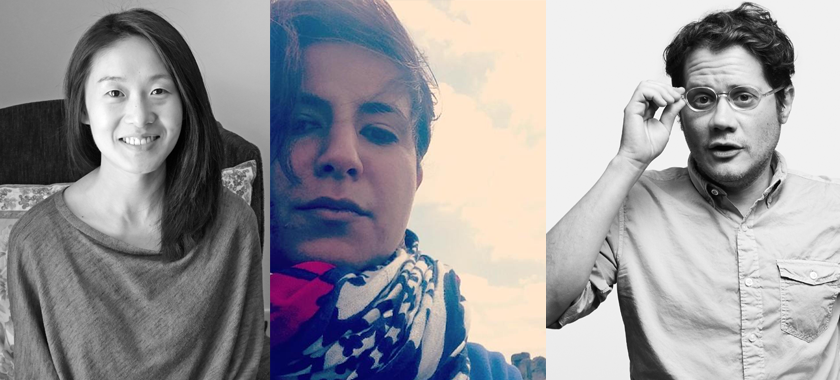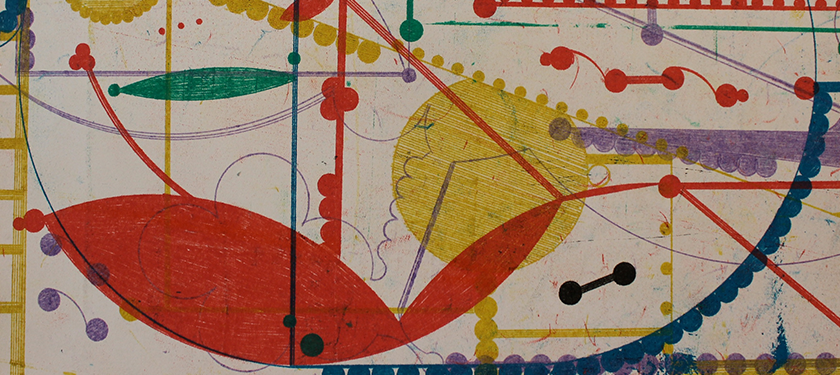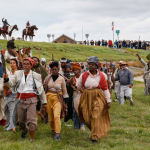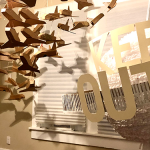Business of Art | The Immigrant Artist Experience
“I was told along the way of making this book, ‘don’t tell an immigrant story—it’s been done…’ Well okay, not by me though. And here we are.” – Marwa Helal
Chinese writer Ge Gao (Fellow in Nonfiction ’20) is at work on a book of essays about her cross-cultural coming-of-age story. Born in Egypt, Marwa Helal (Fellow in Poetry ’20) is the author of Invasive species (Nightboat Books, 2019). Hailing from Puerto Rico, Ricardo Maldonado (Fellow in Poetry ’11, ’20) is the author of The Life Assignment (Four Way Books, 2020). The three writers participated in a multi-part interview about their careers and experience participating in NYFA’s Immigrant Artist Mentoring Program (Maldonado mentored Helal in 2014 and Gao in 2017). You may read the first part of the conversation here. Now, in this second feature, we’ll focus on their writing origins, tips for building community, and advice for newly immigrated writers.
NYFA: Can you tell us a bit about the origins of your artistic practice prior to moving to the U.S.?
Marwa Helal: I am the only writer in a family of scientists (*sweats*). So I bring that scientific method and curiosity about the world into the process. Life is the lab. As far as artistic practice goes, photography and dreams are the guides. They travel in the same way poems do.
Ricardo Maldonado: Like Marwa, I am the only writer [in the family]. Or, rather, the only one who commits time and resources to a page. Having been born in Puerto Rico means I was born a U.S. citizen but grew up in a “country” (i.e. territory or colony) that is seen, by law, as “foreign in a domestic sense.” That bit of official language has followed me all my life, even when I live on the mainland. I began writing in English until recently—and it is through writing in Spanish that I got to redefine how I see myself and therefore my work.
Ge Gao: I read a lot as a child but I hardly imagined that I could pursue writing as my profession one day, in addition to writing in a language other than my mother tongue. But looking back, it actually makes perfect sense to me now—writing is a form of liberation that I didn’t know I needed when I was a teenager in China. It wasn’t until in my college years when I was studying Western philosophy in Minneapolis, that I learned I had something to say and I felt the urge to say it on the page.
NYFA: What role would you say migration and/or immigration has played in your development as a writer?
MH: I think you all know; it’s been me vs. immigration bureaucracy for the first 30 years of my life. I was told along the way of making this book, “don’t tell an immigrant story—it’s been done…” Well okay, not by me though. And here we are.
RM: Because I am a queer Puerto Rican poet and translator who thinks and loves in a language that is not English, I feel deep sympathy for the immigrant story—or rather, a deep need to tend to the immigrant community and the immigrant writer, as a writer, as a translator, and as a human being.
GG: Perspectives. The juxtaposition of two countries, two cultures, two moral values and worldviews gives me lots of different perspectives to look at things. Though it sometimes can be baffling for me to live my days and make choices of how or where to place myself in this country, it is a tremendous gift for my writing. It forces me to question and investigate more than what’s obvious and acceptable to everyone else.

NYFA: If you could give one key tip to a newly immigrated writer, what would it be?
MH: Take your time. Trust your internal guidance. The path is already laid out before you. All you have to do is stay open and take notes.
RM: Find writers like Marwa and Ge and keep them close to you. Their attentiveness to craft goes beyond literary concerns. They will be your family.
GG: Find a mentor and a friend like Ricky, who’s generous, kind, and giving. Find a village of people like Ricky to support you and be your cheerleaders. Find the time and space for yourself and your work. Give it some time—it takes what it takes to finish. Trust that you will get there. Meanwhile: live, love, eat healthy food, and exercise!
NYFA: Have you collaborated with artists of other disciplines? How might literary artists become more integrated with visual and performing artists and vice versa?
MH: Just get the work out there. The collaborations arrive and they are more thrilling than you can imagine. Like Adrian Aguilera and Betelhem Makonnen: people the We, for example. I never would have imagined this!
RM: I am constantly in conversation with other mediums—by which I mean, the world that the arts, regardless of medium, makes legible to us is of real interest to me. The cultivation, as an emerging artist, of a multi-disciplinary eye will expand the breadth and depth of your work. I think similarly about translation.
NYFA: How have you built community with other writers, and do you have any advice on how to do it?
MH: In addition to IAP, spaces like Cave Canem, VONA/Voices, RAWI (Radius of Arab American Writers, Inc.), the Conversation, Brooklyn Poets, Poets House, and many others have been essential to introducing me to some of my most valued teachers and friends. Find your folx and keep the conversation going. We have so many ways of talking to each other now. It’s an exciting time and I am grateful to be writing with you all.
RM: Like Marwa, I feel grateful for the ways we can talk and see each other now. As for advice: run your own reading series (through Zoom!), print your own journal from home, write and think non-traditionally and beyond your and our borders. Write a poem for the person you want to be 10 years from now. Then make it about the person you want to meet then. Make that poem a working version of the trust you have for yourself, those you can love, and your own life.
GG: Organize a group of friends and writers you trust and respect. Make commitments to meet regularly. It can be workshops; it can be talks in which you check up on each other’s progress. Show up for your friends and make time and space for each other’s work, including your own.
– Interview Conducted by Alicia Ehni, Program Officer and Kyle Lopez, REDC Fellow
This post is part of the ConEdison Immigrant Artist Program Newsletter #134. Subscribe to this free monthly e-mail for artist’s features, opportunities, and events. Learn more about NYFA Immigrant Artist Mentoring Program.
You can find more articles on arts career topics by visiting the Business of Art section of NYFA’s website. Sign up for NYFA News and receive artist resources and upcoming events straight to your inbox. Have an arts career question? You can contact NYFA staff directly by emailing [email protected].






